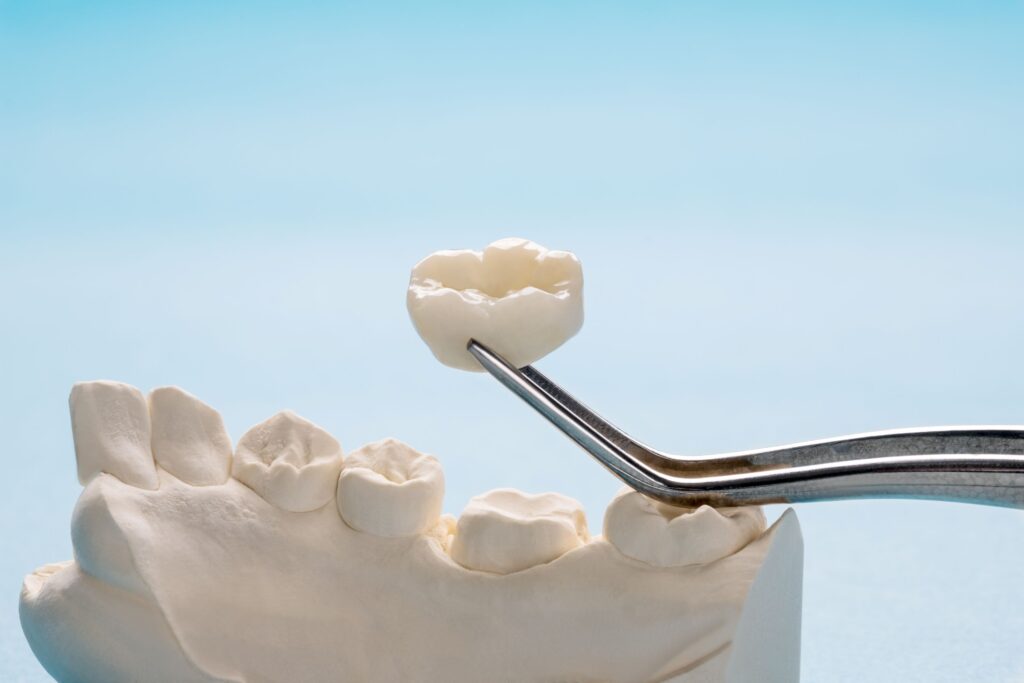
Do you have a severely decayed or damaged tooth, or have you recently undergone a root canal? If so, you likely will need to be fitted with a dental crown to restore your troubled tooth’s appearance and functionality.
Although these prosthetics can preserve your grin, many patients avoid the procedure because they’re worried it will hurt. Fortunately, that’s not usually the case! Continue reading to learn more about this versatile treatment to set your fears aside.
What is a Dental Crown?
These are tooth-shaped caps made from ceramic or resin that are cemented over an injured tooth so that you can continue to use it normally. They are customized to be the same size, shape, and shade as your natural teeth, so no one can tell the difference once it’s bonded in place.
Dental crowns are used in several ways to protect and preserve your smile, including:
- Covering teeth that are too broken to be fixed effectively with a filling.
- Shielding a tooth that’s been treated with a root canal.
- Anchoring a dental bridge in place.
- Masking aesthetic imperfections like severe chips, cracks, or discoloration.
- Topping dental implants to replace missing teeth.
What Does the Dental Crown Procedure Like?
Typically, you can expect getting your crown to take two separate appointments. Although it might vary slightly based on your unique circumstances, you can usually expect the following to occur at each visit:
First Appointment
- Consultation and examination. Your dentist will update your medical history and inspect your teeth and gums to determine that you’re a good candidate for this treatment. This often involves taking X-rays to get a picture of what’s happening below your gums.
- Local anesthetic. A numbing agent is injected into your gums around the affected tooth to keep you comfortable.
- Tooth preparation. A small amount of enamel is gently removed so that your prosthetic will fit over it without looking overly large or bulky. This protective outer layer doesn’t regenerate, making this an irreversible change. You’ll need a crown or other restoration in place moving forward to shield it.
- Making impressions. Digital impressions will be made to capture the size, measurements, and dimensions of your teeth, gums, and jawbone that will be sent to a laboratory to design your prosthetic.
- Temporary crown placement. Your dentist will cement a temporary shield over your prepared tooth to prevent possible damage, decay, and disease until your permanent one is ready.
Second Appointment
After a few weeks, the dental lab will return your completed crown so we can schedule a fitting with you. Once your temporary restoration is removed, and if everything fits correctly, your new one will be cemented in place. Excess bonding material will be removed or scraped away and your artificial tooth will be polished to perfection and voila! You can leave with a newly upgraded grin.
Now that you know what to expect from getting a dental crown, you can see why there’s no reason to be worried!
About the Author
Dr. Gary Chaffee has 4 decades of experience helping people build happy, healthy smiles. He earned his dental degree from the Loma Linda University School of Dentistry in 1975 and then completed a two-year Progressive Orthodontics Program. Now, he’s committed to ongoing education and is an active member of the American Dental Association, the American Academy of Cosmetic Dentistry, and other prestigious organizations. He offers a full array of services, including dental crowns, and utilizes state-of-the-art equipment to help you feel comfortable while delivering accurate, long-lasting results. You can request an appointment on the website or call (805) 576-8157.
